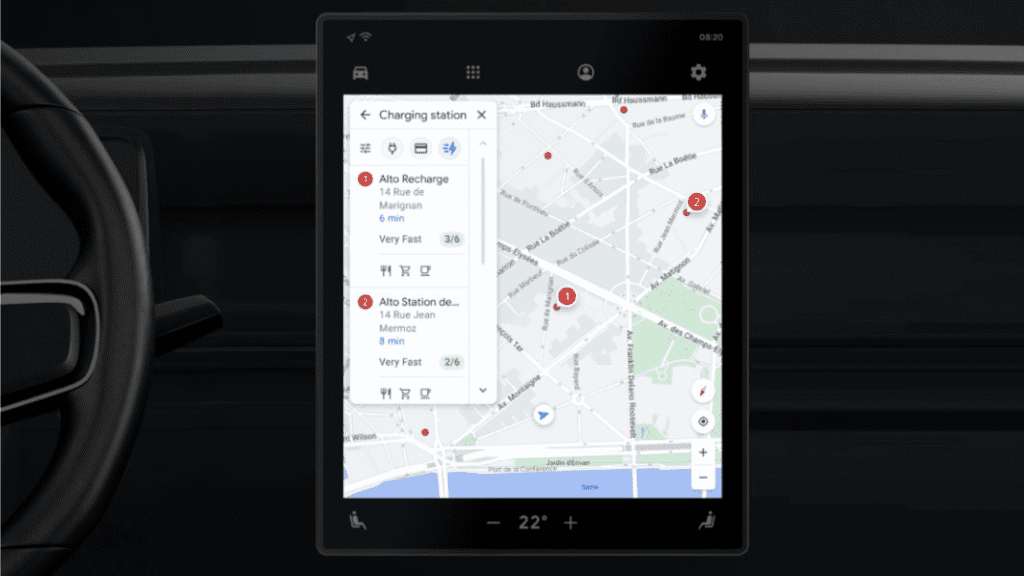Google intros new features for EVs with Maps built in

Google is rolling out new features for electric vehicles with Google Maps built in, the company said at its Live from Paris event Wednesday.
The features, iterations of which were introduced in November to the Maps smartphone app, aim to alleviate the symptoms of range anxiety for EV drivers.
Drivers using Maps on their car’s display screen will be able to easily find nearby charging stations that have chargers of 150 kilowatts or higher capacity for a faster charge. Additionally, for any trip that requires a stop to charge an EV, Maps will suggest the best stop based on factors like the current traffic, the EV’s charge level and how much energy it expects the EV to consume.
Polestar, Volvo, General Motors and Renault are among the automakers that have vehicles with Google built in. At the start of the year, Google said it would roll out a new high-definition version of Maps for cars, starting with the Volvo EX90 and the Polestar 3.
Maps on EVs will also show when places like supermarkets have charging stations on-site. So drivers who enter “Supermarket” into the search bar will find that certain markets include a small charging station icon underneath the address and next to the market’s rating. EV drivers are often advised to keep topping up their vehicles whenever they can to ensure a long battery life and avoid driving on a low battery, so it’ll be helpful to know where they can do so as they run errands.
Google said all of the new features for EVs will start rolling out in the coming months. The new Maps features for EVs come three months after Google added filters to the smartphone app for fast charging stations and EV plug compatibility.
Google also revealed updates to Maps on smartphones during the event, including the expansion of Live View and Indoor Live view, which uses a phone’s camera and augmented reality elements to superimpose directives like arrows and distance markers on top of the real world.



